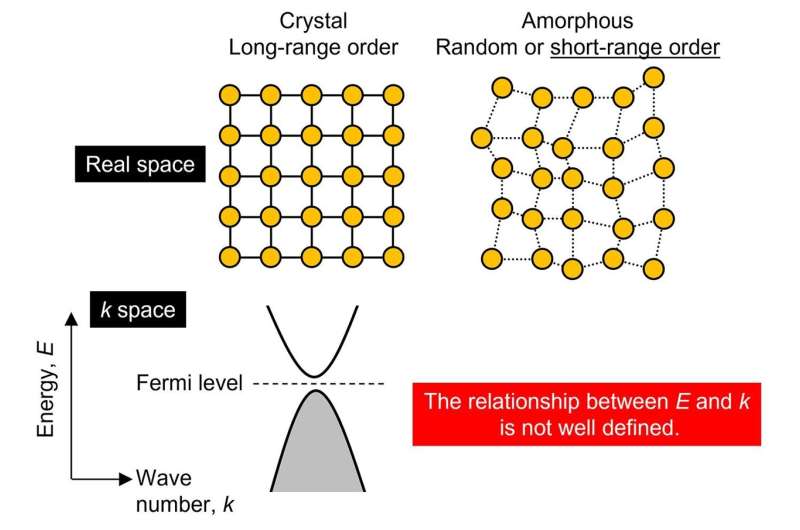This article has been reviewed according to Science X's editorial process and policies. Editors have highlighted the following attributes while ensuring the content's credibility:
fact-checked
peer-reviewed publication
trusted source
proofread
Discovering features of band topology in amorphous thin films

In recent years, scientists have been studying special materials called topological materials, with special attention paid to the shape, or topology, of their electronic structures (electronic bands). Although it is not visible in real space, their unusual shape in topological materials produces various unique properties that can be suitable for making next-generation devices.
It was thought that in order to exploit topological physical properties, crystalline materials, where atoms are highly ordered and arranged in repeating patterns, were needed. Materials in the amorphous state, where atoms are disordered and only periodically arranged over short distances, were considered unsuitable for hosting the outstanding physical properties of topological materials.
Now, a collaborative research group has verified that even amorphous materials can have these special properties. The group was led by Associate Professor Kohei Fujiwara and Professor Atsushi Tsukazaki from Tohoku University's Institute for Materials Research (IMR); Lecturer Yasuyuki Kato and Professor Yukitoshi Motome from the University of Tokyo's Graduate School of Engineering and Associate Professor Hitoshi Abe at the High Energy Accelerator Research Organization's Institute for Materials Structure Science. Details of their findings were reported in the journal Nature Communications on June 13, 2023.
"We discovered that the concept of band topology, which has been discussed mainly in crystals, is also valid and technologically useful in amorphous states," stated Fujiwara.
To make their discovery, the team performed experiments and model calculations on iron-tin amorphous thin films. They demonstrated that despite a short-range atom arrangement, the amorphous material still showed the same special effects as in the crystalline materials, notably the anomalous Hall effect and the Nernst effect.
"Amorphous materials are easier and cheaper to make compared to crystals, so this opens up new possibilities for developing devices using these materials. This could lead to advancements in sensing technology, which is important for creating the Internet of Things (IoT) where many devices are connected and communicate with each other," adds Fujiwara.
Looking ahead, the group is eager to unearth more amorphous materials and develop innovative devices using them.
More information: Kohei Fujiwara et al, Berry curvature contributions of kagome-lattice fragments in amorphous Fe–Sn thin films, Nature Communications (2023). DOI: 10.1038/s41467-023-39112-1
Journal information: Nature Communications
Provided by Tohoku University





















